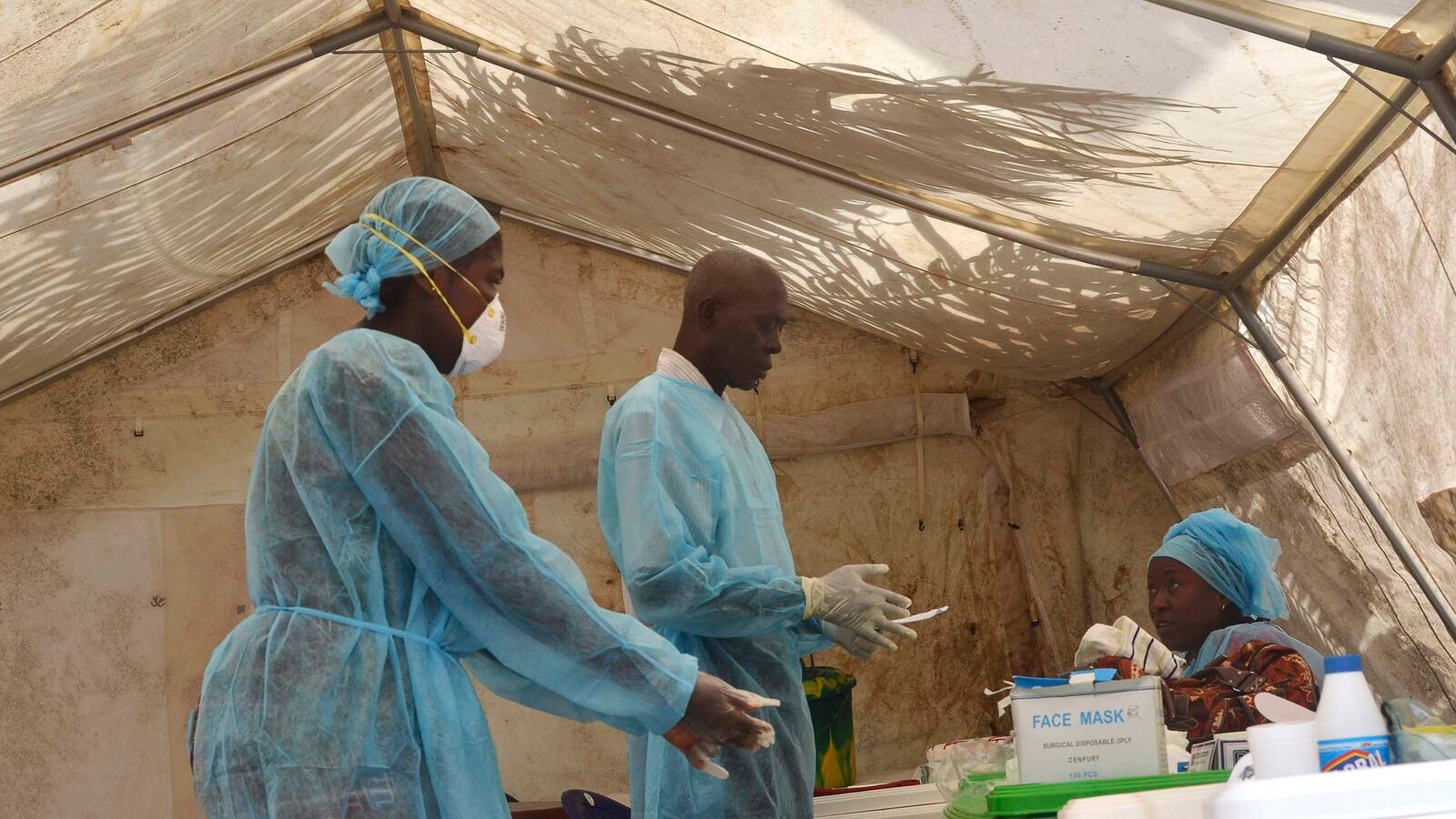The U.S. is bringing home two Americans infected with Ebola virus for treatment at Emory University’s specially equipped isolation ward, near the Centers for Disease Control and Prevention’s Atlanta headquarters.
The rationale for the 5,000-mile transfer seems to be two-fold. One, the possibility that a well-outfitted hospital in a major U.S. city that has dozens of personnel trained for this exact situation, plenty of space, and deep pockets to foot the bill might improve the odds of survival for the two Americans, Dr. Kent Brantly and Nancy Writebol. Second, the government may be responding to a quaint if U.S.-centric urge to care for its own.
We know very little about the two patients’ conditions. According to information from Samaritan’s Purse, the Christian international relief organization that employs Brantly, most reports suggest they are “stable” but “grave” condition—though the same dispatch refers to them as being in “serious” condition. The lack of clear information may relate to genuine confusion or the desire to protect the patients’ confidentiality. It also may relate to our still primitive understanding of the natural history of Ebola virus infection.
Brantly apparently seems to be clear-thinking enough to have refused a one-dose-only treatment for the disease, a vaguely defined “serum” that he insisted his colleague Writebol receive—possibly because he is aware she is sicker, possibly because he is the sort of person who simply tilts that way. And presumably they are stable enough for the 5,000-mile flight from Monrovia to Atlanta. In general, gravely ill patients are too unstable to move; by inference—not evidence—the decision to bring them home might suggest that they are stable.
More important, with the move, the CDC, or whoever made the decision, is betting that high-tech American care using Ebola-inexperienced medical staff is better than not-so-high-tech care with remarkably experienced staff. This high-low discordance often is seen in tropical medicine. For example, many are taught in medical school that the best place to be treated for severe malaria is not the tertiary care medical palace on the American hill where a case is seen every year or two but the run-down clinic in the local country where malaria is as common as a stubbed toe and the staff knows every trick of the trade.
For Ebola treatment, though, I suspect the decision is correct: Writebol and Brantly are better off here. Much about the disease and its related conditions, called collectively the “viral hemorrhagic fevers,” is not well studied for the very reason a patient is being flown home. The resources simply are not available to articulate and record, to take extra blood, and to perform additional X-rays—all necessary to fully define any disease. Therefore we lack the typical medical textbook level of detail that helps us anticipate the next problem.
But hospitals in the U.S. are great at treating the manifestations of Ebola—dehydration, kidney failure, liver failure, hemorrhage, bleeding problems, and all the rest. These are routine problems for any hospital, and the U.S. has the supplies and the rapid labs and well-trained approaches to hygiene and isolation to quickly snap into Ebola-ready care.
We also may have a few medications worth trying. As noted, the authorities are being intentionally vague about the mysterious “serum” Writebol received and similarly unclear, at least to my read, about a blood transfusion given to Brantly. The latter is a headline-maker if ever there was one: the 14-year-old whom Brantly had successfully treated wanted to give back, so he donated his own blood.
Although this is great copy, it is still unclear what role blood would have in helping Brantly. One possibility is that they skimmed off the anti-Ebola antibodies from the blood of the 14-year-old in hopes that this “passive immunity” would give small advantage to Brantly’s exhausted immune system. This therapeutic approach reportedly failed in one attempt to cure a Russian lab worker who accidently inoculated herself with Ebola but is an approach commonly used for other rare diseases without established treatments. For example, vaccinia immune globulin, or VIG, is stored and ready for the next person who becomes ill from smallpox vaccine.
In addition, a handful of other medications in various stages of development might be available in the States but not in Liberia. Unexpectedly, drugs in the tamoxifen family of anti-estrogen medications seem to be able to block Ebola’s ability to enter cells. Promising work has been completed in rodents but none yet has been reported in primates. Unfortunately, with Ebola it has long been observed that non-primate animal models do not predict response in primates, including humans.
Medications without names, such as the recently described BCX 4430, an anti-viral medication similar in its mechanism of activity to HIV fighters like AZT, may soon become available. These drugs interfere with the double helix zip-unzip-zip-again process of RNA and DNA replication. Many news reports that refer to a possibly effective “vaccine” from the NIH that could be available for humans soon may be referencing this product, which is delivered by twice daily injection. It has been studied in prevention of new infection with an Ebola cousin, Marburg virus, in cynomolgus monkeys, where it shows real promise; its activity in treating established, active infection—most relevant to Writebol and Brantly—is very modest at best.
So there is reason to think the move to the U.S. could help the sick patients. However, right now, it is extremely difficult to have any sense of whether Brantly and Writebol will die of Ebola. Overall mortality rates have been about 60 percent in this outbreak, but little analysis has been done to determine if one type of patient is at higher risk for death than the next. To muddy things further, we have been given no details about their blood results, X-rays, respiratory status, or any facts useful to develop an informed prediction—an important safeguard to assure the patients’ privacy.
So in the meantime we will proceed with our uniquely American blend of excess (a specially fitted plane and an entire building to treat two people); derision (can we really trust Ebola virus containment those CDC guys who let anthrax escape?); and hostility (witness the “Twitter explosion” of locals questioning the prudence of helping Brantly and Writebol given the possible Hollywood-like epidemic the action might set off).
I personally have no concern that the transport will create any public danger, though I do admire the 100 or so Emory employees who will work closely with the two Ebola patients. My worry is this: that the focus on the real danger to these two people and the imagined public risk will distract attention and possibly resources from the hundreds with Ebola infection in West Africa—the very people Kent Brantly and Nancy Writebol set out to help.





